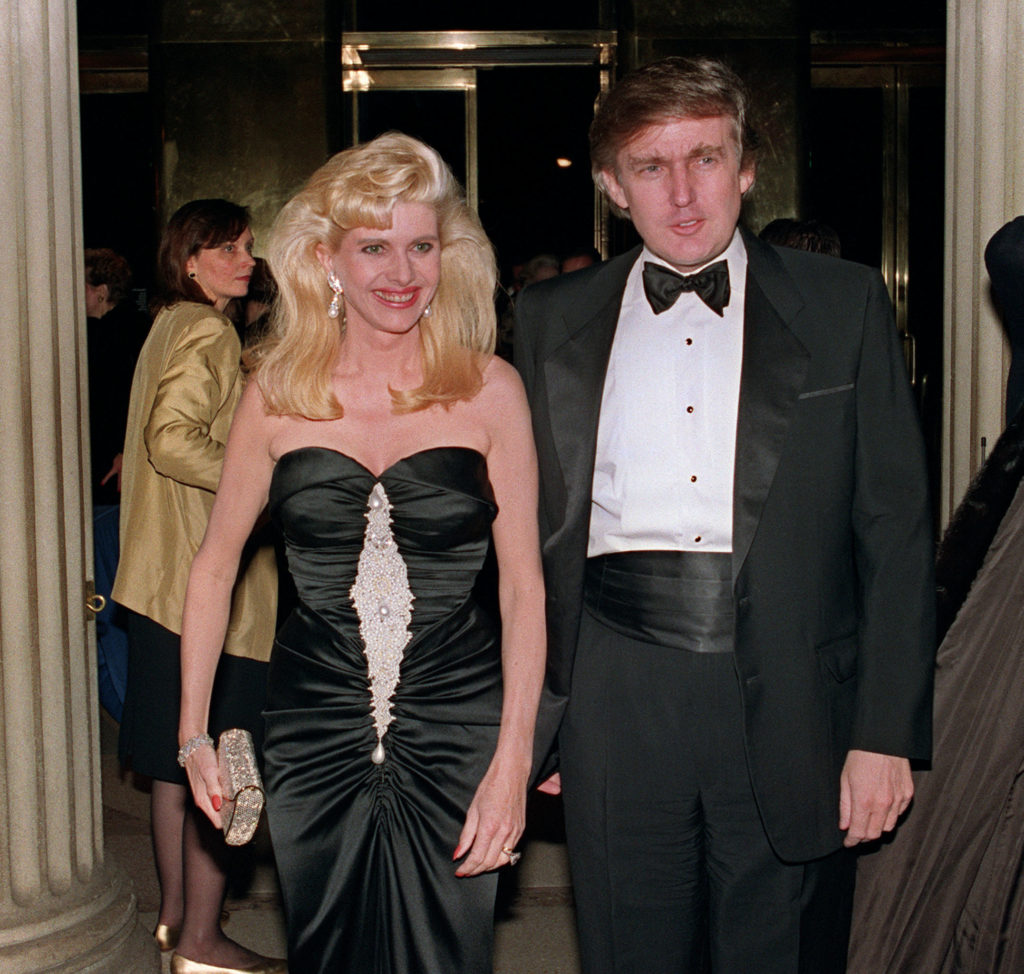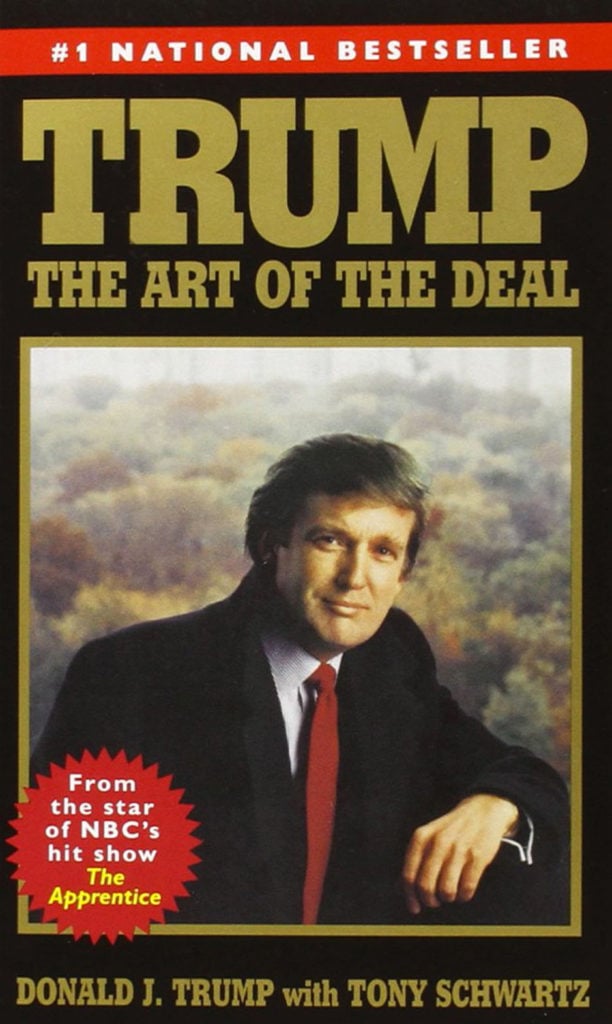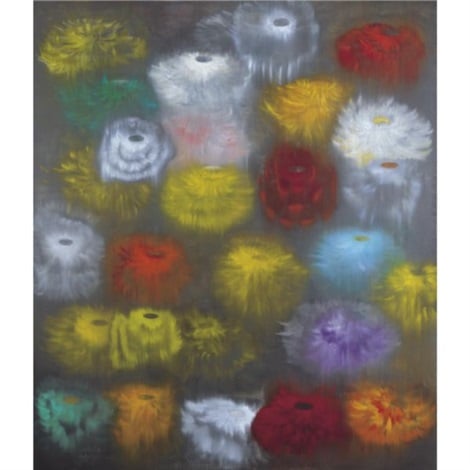Art World
What Donald Trump Learned From the 1980s New York Art World
It's actually more than you think.

It's actually more than you think.

Ben Davis

Donald Trump’s dislike of high culture is well known. Yet the President Elect is very much a product of ‘80s New York, in all its excess, and a very visible part of that scene was the then-unprecedented boom in contemporary art. Indeed, I’ve been reading The Art of the Deal, his 1987 self-help book/calling card, and the very first lines of the book represent a kind of artistic philosophy:
I don’t do it for the money. I’ve got enough, much more than I’ll even need. Deals are my art form. Other people paint beautifully on canvas or write wonderful poetry. I like making deals, preferably big deals. That’s how I get my kicks.
The best of Artnet News in your inbox.
If this sounds familiar to the art lover, that may be because it could be cribbed from the Philosophy of Andy Warhol. The Warhol Foundation, in fact, has noted that in at least two of his later books, Trump’s debt to Warhol’s “business art” idea is made explicit.
For instance, in Think Like a Champion: An Informal Education In Business and Life (2009), on page 57, we find the following:
There’s a certain amount of bravado in what I do these days, and part of that bravado is to make it look easy. That’s why I’ve often referred to business as being an art. I’ve always liked Andy Warhol’s statement that, ‘making money is art and working is art and good business is the best art.’ I agree.
Trump uses the same Warhol quote as the epigraph of another chapter, “It’s Not Personal—It’s Business.” He really likes that quote! (Or, at the very least, his co-writers think the artistic reference is a good way to ennoble a crass worldview.)
In the early ‘80s, Trump had visited the Factory and floated the idea of commissioning several portraits of the Trump Tower. Warhol made a series, but the mogul failed to come through with the purchase, a lapse the artist never forgave him.
Warhol, 'Trump Tower,' 1981, at the Warhol Museum pic.twitter.com/JRNYJluBXy
— Andrew Russeth (@AndrewRusseth) October 5, 2013
Getting back to The Art of the Deal, though, there appears to be at least one artist of the era that Trump genuinely admired. The first section of the book, entitled “Dealings: A Week in the Life,” offers the following episode:
2:45 p.m. A friend of mine, a highly successful and very well known painter, calls to say hello and to invite me to an opening. I get a great kick out of this guy because, unlike some artists I’ve met, he’s totally unpretentious.
A few months back he invited me to come to his studio. We were standing around talking, when all of a sudden he said to me, “Do you want to see me earn twenty-five thousand dollars before lunch?” “Sure,” I said, having no idea what he meant. He picked up a large open bucket of paint and splashed some on a piece of canvas stretched on the floor. Then he picked up another bucket, containing a different color, and splashed some of that on the canvas. He did this four times, and it took him perhaps two minutes. When he was done, he turned to me and said, “Well, that’s it. I’ve just earned twenty-five thousand dollars. Let’s go to lunch.”
He was smiling, but he was also absolutely serious. His point was that plenty of collectors wouldn’t know the difference between his two-minute art and the paintings he really cares about. They were just interested in buying his name.
I’ve always felt that a lot of modern art is a con, and that the most successful painters are often better salesmen and promoters than they are artists. I sometimes wonder what would happen if collectors knew what I knew about my friend’s work that afternoon. The art world is so ridiculous that the revelation might even make his paintings more valuable! Not that my friend is about to risk finding out.
You gotta love that what Trump admires about his mystery painter friend is his ability to make money by making stuff up.
(As a note of historical interest, Trump’s hour-by-hour account of his day has him hop from the call with his painter friend, to a city planning meeting, to a dinner with Cardinal John O’Connor, archbishop of New York and implacable foe of gay rights. O’Connor would be a favorite target of ACT UP in the coming years. “He’s not only a man of great warmth, he’s also a businessman with great political instincts,” quoth Trump.)
Is Trump’s successful painter friend real, or just a composite of different myths of the day? The tale sounds just a little too perfect to be true.

The cover of The Art of the Deal, by Donald Trump and Tony Schwartz.
Most of The Art of the Deal is known to be colorfully embellished anecdote, written not by Trump but by co-author Tony Schwartz, based on observations of the man at work. Schwartz now regrets having made the megalomaniac real estate magnate sympathetic.
However, the indiscriminate obsession of new money with new art was very much in the news in the go-go, trickle-down ’80s, and the price point mentioned ($25K) was on-the-nose for reports of what Basquiat paintings were going for at the moment the book was written. The conceit of pouring random paint onto a canvas on the floor doesn’t really sound like the MO of any of the most-visible painters of the day, though, who were more known for a return to figuration of various kinds (see: the Schnabel-Fischl-Longo-Salle axis).
One of the biggest ‘80s abstractionists might have been Ross Bleckner, who had a solo show at Mary Boone in 1986, when The Art of the Deal was being written. Bleckner’s misty cage-like patterns of stripes from the era don’t quite sound like what Trump was detailing though, either.
Still, here’s food for thought: Bleckner and Boone are at this very moment involved in a very public spat, accused of having repainted a popular canvas, stamped it with a fake identification number, and fobbed it off as an original to a credulous collector.

Ross Bleckner, Sea and Mirror (1996).
The collector in question in the new Bleckner/Boone scandal, of course, is actor Alec Baldwin, who is, as it happens, currently also in the news for his Saturday Night Live impression of Trump. It would be strange indeed if Donald Trump’s autobiography provided further fuel for Baldwin’s suspicions.
But is the incident real at all, or just an early example of fake news? I’m taking tips from anyone who might have an idea. I wrote Schwartz to see if he could offer any clues to the mystery of Trump’s painter chum. His reply was succinct: “No idea!”